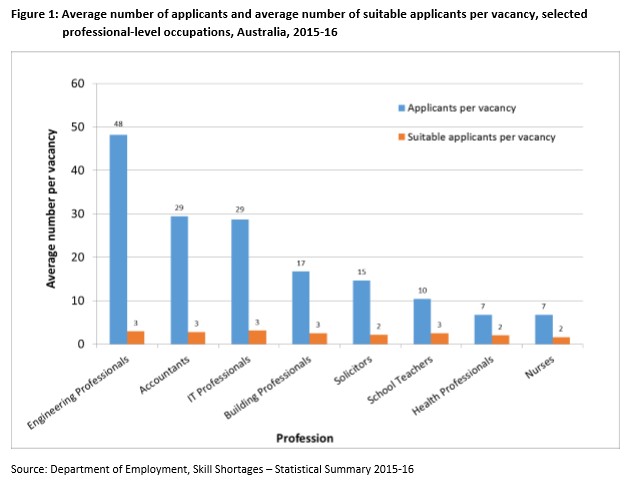Mark Brayan, chief executive of recently-listed ASX tech company Appen, is the latest business representative to have a full blown whinge over the Turnbull Government’s modest changes to Australia’s temporary ‘skilled’ visa system. From The AFR:
Appen said the Turnbull government’s tough stance on 457 work visas will force companies to invest offshore and may also deter international groups from pursuing business locally…
“If we can’t get the talent we need here, we either seek to hire people from overseas into Australia or hire them into an overseas office,” Mr Brayan told The Australian Financial Review.
“Regulations impacting 457 visas will make this more difficult for us and other businesses to get the people required”…
Mr Brayan added that the 457 visa changes present a “sovereign risk” to Australia.
“The more difficult it is to do business in Australia, the more attractive it is to consider other countries,” he added…
“The work we do requires a very rich cohort of multicultural people,” Mr Brayan said. “I don’t know how many 457 visas we have, but as a business we reply on this talent and these changes could impact our business.”
If Brayan had bothered to do some research he would have identified four major problems with the temporary skilled visa system that required fundamental reform, namely:
- There are way too many occupations on the skills shortages list.
- Those working under the skill level 1 (so-called “Managers and Professionals”) and skill level 2 (so-called “Associate Professionals”) are not subject to any labour market testing to determine whether an Australian can do the job first. Hence, nearly 80% of total 457 visa holders are not subject to any labour market testing.
- Where labour market testing is required it can be overcome by putting an ad on Facebook or other social media and that is enough to show that you’ve tested the labour market – basically a farce.
- The 457 visa system is not sufficiently responsive either to higher levels of unemployment, or to labour market changes in specific skilled occupations.
The recent Senate Report, entitled A National Disgrace: The Exploitation of Temporary Work Visa Holders, identified massive flaws in the Consolidated Sponsored Occupations List (CSOL), which it saw as ad hoc and ineffective. The Senate Committee also claimed the 457 visa system was”not sufficiently responsive either to higher levels of unemployment, or to labour market changes in specific skilled occupations”. It also noted that the minimum pay floor of $53,900 for 457 visas was too low and recommended that it “be indexed to ordinary weekly earnings”.
Joanna Howe, Senior Lecturer in Law at University of Adelaide, also identified major flaws in the 457 visa program, which has meant that many foreign workers are being used in areas where there are no labour shortages, with Howe describing the system as “shambolic”.
Meanwhile, the Department of Employment has for several years shown that skills shortages are near ‘historical lows’. In a similar vein, almost 90% of 457 visas issued have gone to the cities rather than the regions, where skills shortages are supposedly the most acute.
Finally, the Australian Population Research Institute’s recent report entitled “Immigration overflow: why it matters”, examined the widespread rorting of Australia’s 457 visa system, especially by Indian IT firms, and showed how the biggest sources of skilled migrants – engineers, accountants and IT professionals – are also the areas with the biggest surplus of workers:

In this context, let’s examine the Turnbull Government’s piss weak changes to temporary skilled visas:
- Implementing a new two-year temporary visa system that has no path to permanent residency, as well as a four-year scheme for highly skilled positions where there is a proven labour shortage;
- Cutting the range of jobs that foreign workers can apply for by around 200 occupations;
- Mandatory employer-conducted labour market testing for all visas issued under the new scheme; and
- Mandatory English language proficiency.
The appallingly low pay floor of $53,900 (non-indexed) has been retained, which is 35% below the average full-time salary of $82,789 (which includes unskilled workers). Thus the temporary skilled visa system will continue to undermine the pay and working conditions of local workers.
The mandatory labour market testing requirements implemented by the Coalition are a sham because they allow employer-conducted testing rather than from an independent body, and can be easily overcome by placing an ad on social media.
And the changes to the skilled CSOL are immaterial, since they would only reduce the use of temporary skilled visas by 8%.
From business’ incessant whining over the 457 changes, you would think the Turnbull Government had totally abolished immigration altogether, rather than making minor tweaks to a system that was clearly being overused if not outright abused by employers.
unconventionaleconomist@hotmail.com

